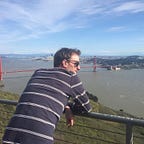40. James Brown — Live At The Apollo (1963)
Published in
2 min readApr 22, 2020
- Very interesting that 15% of the albums included thus far have been live recordings. This seems reflective of a change in what’s popular over time to some degree. Live jazz recordings make sense, since the essence of jazz is in the improvisation and a live experience will (theoretically) both be the same as a recording and capture once in a lifetime set of music. Sam Cooke made sense, since Live At The Harlem Square Club captured a sound totally distinct from his recorded sound. James Brown — the Hardest Working Man in Showbusiness — maybe didn’t require a live recording, as his recorded music does a decent job of capturing his energy, but it’s still fun to hear how electric his audience was. You can hear the effort he put in.
- It appears his label also did not think a live recording was needed, so he recorded this independently. Good move, James. My understanding of this time in music is that labels basically had a stranglehold on what an artist could or couldn’t do (see also: Elvis, Sam Cooke), so it’s interesting to find these cases of true artistic independence winning the day.
- This recording is a great little snapshot of James Brown before he became James. Brown., as most of the major hits of his career were still to come. He blazes through these tracks, his band (the Famous Flames, an apt descriptor) precisely pounding each beat. When he gives out a trademark yell, you want to yell along. Sometimes you can practically hear him bounding all over the stage.
- Refreshingly cool album art above. That’s how you do it, non-jazz artists!
- Were all concerts back in the day under 40 minutes long? When did concerts become 1.5+ hours? This and other questions, hopefully to be answered over the course of the remaining 961 albums.
One Essential Song:
Listen on Spotify:
